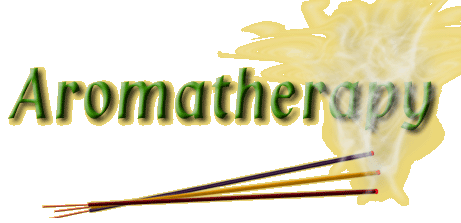

Incense aromatherapy & herbal incense remedies
Aromatherapy, as a term, was coined by French chemist Rene-Maurice Gattefossé in 1937. However, the therapeutic use of herbal essences in Incense Aromatherapy can be traced back to the earliest periods of civilization in India, Egypt and China.Aromatherapy was practiced in Vedic India both with essential oils and Incense fragrances. Floral and other herbal essences have been in continuous use by the indigenous medical system, Ayurveda, since time immemorial. Ayurvedic physicians utilized herbal essences profusely for both mental and physical therapies, in addition to Aromatherapy (Incense, etc.). According to Ayurvedic pharmacology, the intrinsic qualities of flowers and other herbs allow for the selection of precise single or compound remedies to bring harmony to each individual. Such qualities include taste, energetic potential, post-assimilation effect, and specific action (rasa, virya, vipaka and prabhava).
In the form of carefully formulated Incense, herbal preparations are used in Ayurveda to prevent infection, purify the environment, and stimulate prana, the vital force. Incense is used effectively in Ayurveda to restore harmony to the phycho-physical constitution and increase the mode of goodness, or sattva
The Egyptians documented their utilization of essential oils by 3,500 BCE, although records point to their use for thousands of years prior to that date. Egyptians used spikenard, oregano, citrus fruits, myrrh, frankincense, cedar and styrax (Prime Incense & Aromatherapy ingredients) to great therapeutic advantage. Some researchers speculate that Egyptian spikenard, a member of the same family as valerian, must have been a primary constituent in the fragrant ointment used by Mary Magdalen to annoint the feet of Jesus before the Last Supper.
European aromatherapy can be traced back to the medical schools of the Greeks and Romans, who used fumigations and other applications of volatile oils for various therapeutic purposes, both for physical and mental disorders. In the management of epidemics, the use of Fumigation aromatherapy was considered of primary importance as far back as the Hippocratic era.
Chinese Traditional Medicine, the second oldest medical system in continuous practice, makes use of a sophisticated pharmacology based on taste, energetic classifications, and the Five Element theory, strongly reminiscent of Ayurveda.
As in its Indian counterpart, single and compound remedies are utilized in Traditional Chinese Medicine to tonify deficiencies and reduce excesses, thus restoring harmony to the system.
Dr. Gattefossé re-discovered and gave new impetus to aromatherapy in the West, when in 1937 he published his book, Aromatherapie, which was received with incredulity and ridicule by the medical community of that time. However, the last 25 years have seen a slow but significant move toward greater acceptance of aromatherapy.
Inhalation and fumigation, two of the main modes of administration of this ancient healing modality, are easily and effectively achieved through the use of herbal incense. Because incense can be used environmentally or for targeted applications, it has become the aromatherapy of choice for countless millions throughout the planet.
Daily use of incense, and especially Indian natural masala Incense, prevents disease, promotes longevity, harmonizes the psycho-physical constitution, and increases mental clarity.


Home Incense Recipes Incense History Top - Aromatherapy Wholesale Distributor Inquiries